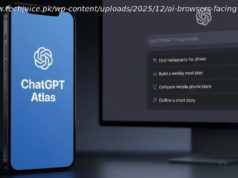Read the in depth Review of Samsung Galaxy S9 Mobile Phone. Know Samsung Galaxy S9 build, design and performance quality along with pros and cons.
The Samsung Galaxy S9 is a beautiful piece of work. It’s future- forward design, the stunningly bright display and a re-engineered camera is an attractive proposition if you have the money lying around, but it’s unlikely to deliver the satisfaction of buying something unique. Samsung’s flagship phone for the first half of 2018 is an iteration of its predecessor at best, and an underwhelming upgrade at its worst.
The Samsung Galaxy S9 is a follow-up to last year’s Galaxy S8, but looking at the phone, you wouldn’t be able to tell them apart. The Galaxy S8’s design was not only functional and ergonomic but it also looked stunning too. No need to fix that which isn’t broken. While that’s definitely a good thing, the Galaxy S9 comes across more like an ‘S’ variant of the Galaxy S8, much like how Apple uses the term to define minor upgrades to its iPhone lineup. There are definitely some welcome upgrades, especially in making biometric authentication easier and faster, and a whole new approach to low-light photos, apart from tiny, but meaningful additions.
Between the Samsung Galaxy S9 and the S9+ this time, the difference is not just the battery and the display size. Now there are two cameras at the back of the elder sibling. But being a stickler for compact devices, the smaller Galaxy S9 feels way more ergonomic and easier to use than the bigger variant. The smaller form factor makes it easier to grip the phone and allow for one-handed use.
However, all that is also pertinent for the older Galaxy S8, so is there a justification to upgrade to the newer and more expensive Galaxy S9 instead of the S8? We find out.
Design
Place the Galaxy S9 and the Galaxy S8 side-by-side and you will not be able to tell them apart. At least from the front. While every other OEM has gracefully embraced the notch, the Galaxy S9 boldly stands out as a full-screen device without ugly cutouts in the display. Instead, Samsung maintains small, but prominent forehead and chins on the front while the display curves around the edges to blend in with the rest of the body. This design philosophy is more preferable over the Notch as the screen is uninterrupted and there’s some space to grip the phone when held horizontally.
Everything that was good with the Galaxy S8 has been carried over to the Galaxy S9, with minor refinements. The bezels are just a little more thinner and about two millimeters have been shaved off in height, making the phone feel even more compact without messing with the 5.8-inch display size. The Infinity display takes up most of the surface and curves down the edges to meet the metal frame, and it looks just as stunning as the Galaxy S8, if not a little aged. Samsung also introduced a lilac purple colour variant of the Galaxy S9 which we received for the review and the glass panel at the back makes it stands out from the crop of metal unibody phones.
You’ll know things have changed when you turn the phone around. The placement of the fingerprint sensor on the Galaxy S8 was universally hated, so Samsung moved it around. It is now just below the camera lens, where your finger is very likely to miss the sensor again. Thankfully, it is much easier to reach than last year’s fingerprint sensor.
Holding the Galaxy S9, it feels like Samsung put every bit of effort to make this a premium smartphone. You’ll know where your money went when you cradle this phone in your hands.
Display
The 5.8-inch Infinity display is the center of attraction of the Galaxy S9. It looks a lot like the one on the Galaxy S8 with the Super AMOLED panel sort of melting into the metal frame along the edges. The QHD+ resolution also remains the same. Being a Super AMOLED display, the black levels are deep with a high contrast ratio. The default display calibration isn’t as oversaturated as on the Galaxy S8 though. Samsung seems to have worked on making this one of the more colour accurate panels. However, if you’re not happy with the colour temperature, you can tweak it in the display settings.
The display is Mobile HDR Premium compliant and also Daydream-ready. I particularly liked the Adaptive display setting which tweaks the colour temperature and brightness based on the ambient light, much like what Apple does with its TrueTone display.
All that was said about the display on the bigger S9+ stands true for the smaller sibling as well. Being more compact, the pixel density on the S9 is much higher at 570 ppi as compared to 529ppi on the S9+. Ideally, that should make the panel on the S9 appear crisper and more vibrant, but it doesn’t make much of a difference here as the AMOLED panel made by Samsung is one of the best out there.
Performance and UI
The Samsung Galaxy S9 and the S9+ has the same set of hardware under the hood — Samsung’s proprietary Exynos 9810 in global markets and the Snapdragon 845 in the US and some other regions. Both chipsets are manufactured on a 10nm process and houses an octa-core processor. The Exynos chipset can hit a max clock speed of 2.7GHz, coupled with an 18-core Mali-G72 GPU. All that should make the Galaxy S9 one of the fastest device around. But it would be hard to eke out that level of performance from the chipset.
We ran the AnTuTu Stress Test with Qualcomm’s Trepn Profiler running simultaneously to note the CPU frequency that the chipset clocks when handling different workloads. Turns out, the CPU hardly went above 1.79GHz and only when the load on the CPU and the cores were at 100 percent did the performance cores hit the max clock speed. That too after quite sometime of sustained load on the chipset.
Most of the times, the Exynos 9810 chipset will not go above the 1.79GHz mark which is the base clock speed of the high-performance M3 cores. Only when the CPU is stressed for a particularly long time will the chipset hit the advertised max clock speed. But that’s not essentially a bad thing. Samsung is actually giving itself some headroom should there be a need for the extra power.
Then again, the Galaxy S9 does have a tendency to heat up a lot. I even got a prompt about the phone overheating and shutting down apps in the next 20 seconds. Samsung hasn’t used a heat pipe in the device and the glass back offers no means for the heat to dissipate.
Benchmark reports peg the Galaxy S9 higher than all other flagships from last year, although it wasn’t at par with the S9+. 3DMark Slingshot gave a score of 3801 as compared to 3884 on the S9+ while on AnTuTu the difference was of 40,000 points. That’s an unusually high difference and we are probing it further. Geekbench’s single core performance between the two was similar, but the multi-core performance was less by about 900 points (which again is alarmingly high).
Samsung’s UI isn’t helping either. Yes, it has improved vastly over the older versions. It even has a new name now — Samsung Experience. It’s more optimised but still takes up a lot of memory even when idle. While the bigger S9+ has extra 2GB of RAM to compensate for it, the smaller sibling sometimes slows down and stutters a bit, but quickly gets back on its feet. Using the phone as a daily driver, I often found around 25 percent RAM left free, which is never a good thing when the going gets tough. The battery drop when idle is also around 4-5 percent over a period of 4-5 hours. That’s much higher than what phones with stock Android offer.
The real-world performance of the phone, however, was quite flawless. Apps open soon as you tap on them and switching between two memory-intensive apps doesn’t take much time. There are also no lags in performing basic operations while gaming will be more or less without a hitch.
There’s reason for the UI to be memory-intensive though. Samsung offers a plethora of features that are unique to Galaxy devices, most of which aim to improve productivity. The Edge Panel which makes apps, shortcuts and contacts easy to access by just swiping from the edge is really useful while the Samsung’s windowed mode can make any app appear in picture-in-picture mode. Finer things like the Samsung Health app that allows users to keep track of important factors like heart rate and sp02 levels, while the settings menu allows just about every aspect of the phone to be customised.
Samsung has also beefed up its security features with the S9. The Iris scanning is now combined with facial recognition to make it more reliable. Biometrics is needed to access the secure folder and in place of passwords.
Introduced in the Samsung Galaxy S9 are the new AR emojis — animated avatar resembling your appearance which can be shared in the form of GIFs while messaging. It doesn’t work as well as its iOS counterpart, but the varied expressions can be entertaining for the first few times you use it.
And then there’s Bixby. Samsung’s voice-based AI-assistant once again gets a dedicated hardware button and is still quite half-baked. However, Samsung has promised a Bixby 2.0 later this year, which will open the platform up to third-party developers and will be more integrated with IoT devices. Currently, Bixby can run basic commands like opening apps, sending messages and calling people. It can also leverage the camera to allow users to perform visual searches and translate in real time.
The Samsung Experience UI is pretty much the same in both the Galaxy S9+ and the S9. Most of the features (save for the AR emojis) are now available in the Galaxy S8 as well as the Galaxy Note 8. If Samsung’s UI is why you’re looking to upgrade, it’s better to stick to the older models.






